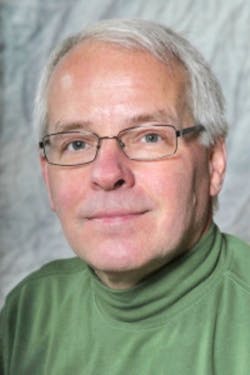Executive Editor
Electromagnetic compatibility has long been an important topic in electrical engineering and in bringing electronic products to market. Delivering a keynote address at the August IEEE EMC + SIPI Symposium near Washington, DC, Julius Knapp, chief of the FCC’s Office of Engineering and Technology, looked back to other EMC symposiums held in the Washington area dating back to 1983. In that year, he said, cellphones were in year 1, and most people hadn’t heard of the Internet. Hot topics at the EMC Symposium included spectrum management, EMC analysis and measurement, EMP, ESD, filters, shielding, and open-field testing.
Moving ahead to 2017, the hot topics in EMC are, well, pretty much the same. But in what he called an “everything-wireless world,” each of those topics takes on new meaning.
“Wireless is integrated into every part of our lives,” he said. “Imagine a world without wireless. You would have to use a key to open your car.” Today, he said, we are well along in 4G, with 5G just around the corner. Most people have access to broadband now, yet a challenge remains—how to make sure everybody has access.
And not only everybody must have access, but everything, as the IoT proliferates. Also speaking at the EMC + SIPI Symposium, Mike Violette of the IEEE EMC Society described the IoT and the society’s efforts to further IoT technology. He was followed by Adam Drobot of the IEEE IoT Initiative, who described efforts beyond EMC to support IoT rollout. Violette described the IoT as a network of items with embedded sensors that communicate over the Internet to perform command and control. He described examples ranging from the Internet of cats to the Internet of bicycles—the latter enabling a bike-sharing application in Beijing.
The IoT, he added, will take advantage of licensed and unlicensed spectrum and will make use of WAN, WLAN, WWLAN (cellular), and even wired connections. But the emphasis will be on wireless, driving up the need for bandwidth.
Drobot said the IEEE’s IoT initiative is aimed at conquering complexity one step at a time, with 22 IEEE societies joining the effort. He described the IoT as a fast-growing technical area that touches almost all verticals of the world economy, with a CAGR of more than 20% in the commercial marketplace. The driver, he said, is the deep digitization of everything we design and deploy today with connectivity extending from local to global.
“The greatest gains will come from how we refactor the design of personal and infrastructure systems that are pervasive and affect us all,” he concluded.
Of course, EMC aspects must be considered throughout a product’s life cycle—a point emphasized by Colin E. Brench of Amphenol during a closing presentation at the EMC + SIPI Symposium.
He described, by way of example, a 15- to 20-year-old project that nevertheless remains relevant and for which he had input for all aspects—the silicon, printed-circuit board, packaging, and system. In a typical design, the engineer will lack control of one or more of these aspects, especially the silicon, which may not even be available for months into a project, he said, warning against a “build it and see what happens” approach. “That’s not EMI design,” he said—“that’s crisis management.”
Knapp concluded his keynote address by making predictions for EMC 2030. We may be dealing with 6G and autonomous vehicles, and AI might have a role to play in EMC. But it’s a safe bet that spectrum management will remain a key topic. Knapp offered a comment that presaged Brench’s warning against crisis management. “Remember that EMC starts in the design process,” Knapp advised.
About the Author

Rick Nelson
Contributing Editor
Rick is currently Contributing Technical Editor. He was Executive Editor for EE in 2011-2018. Previously he served on several publications, including EDN and Vision Systems Design, and has received awards for signed editorials from the American Society of Business Publication Editors. He began as a design engineer at General Electric and Litton Industries and earned a BSEE degree from Penn State.

